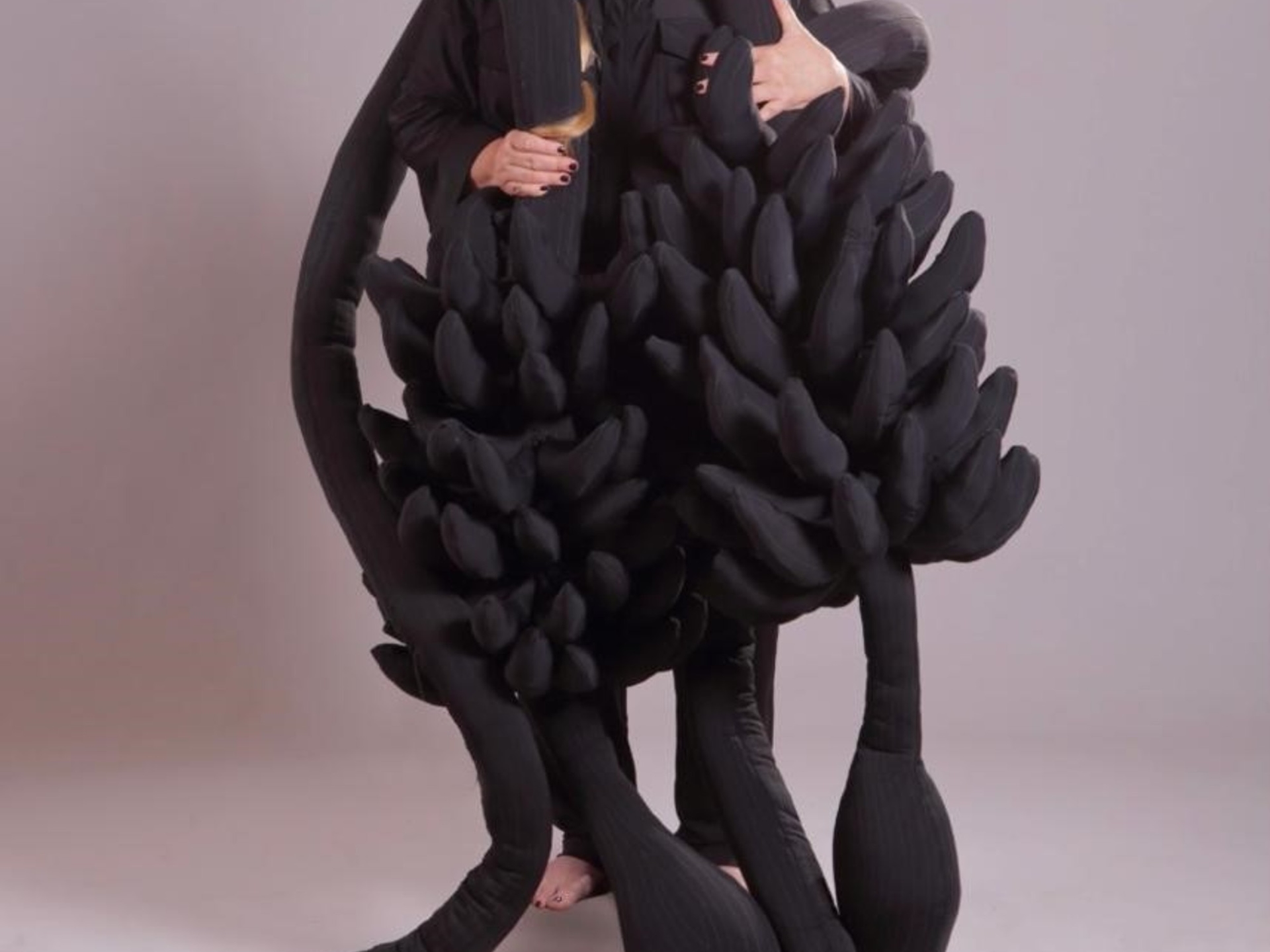Yiyú Finke, poetics in combustion

From her home studio in Misiones, Yiyú Finke paints, sews, draws, writes, and brings together different materials and timeframes. In her own words, her works seem to possess an autonomous life. When she speaks of them, she says, “I love that they are independent, that they have their own energy.”
Born in Aristóbulo del Valle, ancestral land of the Guarani communities, the artist brings her first exhibition, Motor, to the Tramo Gallery in Buenos Aires . “It’s the meeting of textiles and painting and how they interact; like creating an Aleph there, a configuration where each expresses its own language, but within that same language there is another, larger one,” she explains. Displayed in the space, the volumes, textures, and colors intertwine in a conversation that proposes a different kind of coexistence between bodies, objects, and other forms of life.
Finke recalls that her teacher mother took her to school when she was just 4 years old . “We are four sisters and my mom dressed us all the same: with the same fabric, the same shoes, the same socks. We were a sight to behold,” she says, laughing.
 View of the Motor room, in Tramo.
View of the Motor room, in Tramo.Her childhood story has a poetic quality, yet it clearly narrates her living conditions: the 7-kilometer walk to school, the red lipstick of her teacher, working in the garden, her grandmother's store, the honor of being chosen to draw in the notebooks for patriotic events. It was then that she began to sense that art was not a distant vocation , but a way of seeing and experiencing the world.
After finishing high school , she trained in visual arts . A trip to Spain gave her a master's degree and broadened her perspective, but it was her return to her homeland that solidified her artistic language.
 Works by Yiyú Finke.
Works by Yiyú Finke.In the mid-1990s, her ant sculptures appeared, including some made of textiles—1.7-meter-tall figures that she hung on a bridge and that marked the beginning of her work with soft materials. The transition from painting to textiles, far from stopping, reveals itself as a narrative that continues to unfold . In the catalog for her current exhibition, Finke poses in a suit made from the same fabric as the sculpture, which she holds firmly and which seems to extend her attire.
This work is inspired by the character in the book *Three Thunders* by Marina Closs, a writer from her community. In the story , Vera Pepa, a Guarani woman, is stigmatized for giving birth to twins after being raped : having two children at once is seen in her community as a sign of adultery. In the photograph, the body and the textile intertwine without hierarchy, in a framework where memory, form, and language function as a tribute: “If I were to write something, I would write it like this,” the artist affirms, moved.
 Yiyú Finke at the Tramo gallery.
Yiyú Finke at the Tramo gallery.Although she doesn't usually plan what comes next, Finke feels that textiles are gaining ground . Not because she's stopped painting, she clarifies, but because right now the strongest driving forces seem to be there, in fabrics and sculpture. She says it's like when someone tries on two garments and chooses which one to wear. In Motor , the pieces of fabric seem eager to meet the public, ready to take their place. "They've arrived at the forefront," she remarks with amazement and certainty.
During the pandemic, Finke connected with Andrés Waissman , Ticio Escobar, and Jorge Gumier Maier . With the latter, he shared a passion for gardening: “We talked about what was growing, we looked at who had the ugliest plant,” he recalls fondly, “he would show me one that Tigre had, and I would send him another one that was here, totally outlandish.”
 The drawings of Yiyú Finke.
The drawings of Yiyú Finke.So she trained as a yerba mate sommelier. “I discovered that 99% of the world’s yerba mate is here, in Misiones. It was like having things right in front of my face and not seeing them,” she says ironically. Perhaps her interest in yerba mate wasn’t a detour, but a way to continue observing her surroundings : the climate, the soil, the processes that transform the leaf. She’s the bartender at Hormiga, her own bar . There, she applies her knowledge of yerba mate and prepares cocktails and concoctions with her own blends.
Around her workshop and bar, Finke has woven a network of connections that sustain her daily work. This idea of closeness, more than a geographical matter, has become a way of life. She plans to collaborate with one of her neighbors, who paints stones, to transform the bar: while the neighbor paints, Finke will work on her canvases, in full view of those enjoying a drink . “Sharing is also a joy,” she affirms, and in that statement, one perceives an attitude, a way of being in the world based on affection and collaboration.
Finke believes everyone has a treasure within them, that everyone can do something valuable, even if it's not always visible. Hence his fascination with ants, those tiny bodies that work underground, cutting seeds in half so they don't germinate inside the anthill, building impossible forms, invisible to the naked eye. He's drawn to the energy of things that grow silently and are sustained by collective effort . His work seems to gather these traces and transform them into matter, as if each piece were born from the contact between the personal and the collective, between shared life and the immeasurable power of nature.
Clarin





